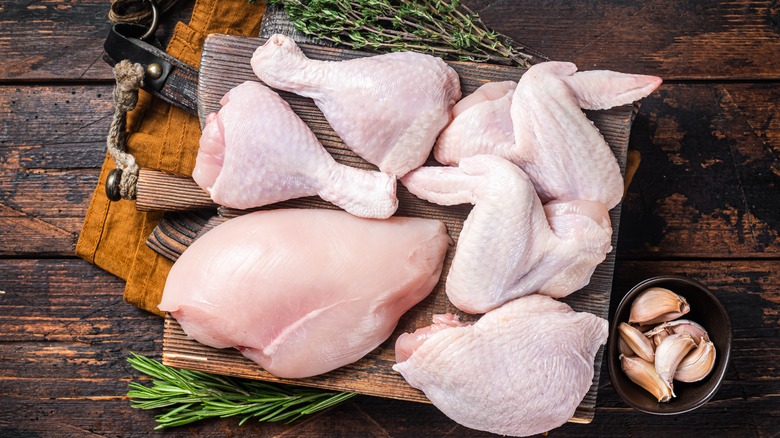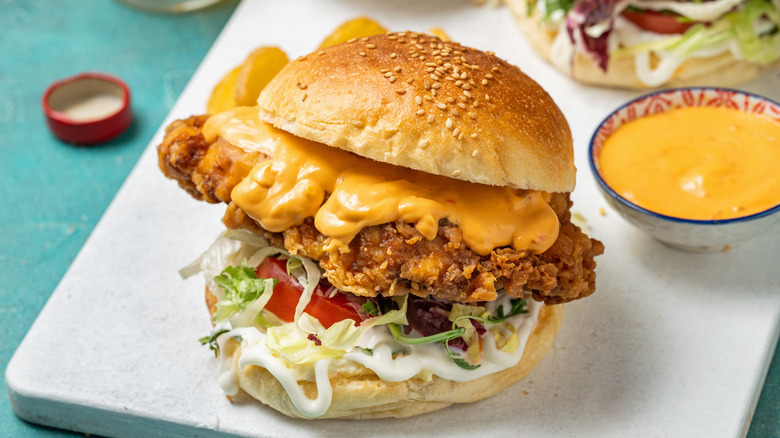When To Use Chicken Thighs As Opposed To Breasts In Recipes
It's the age-old question: White meat or dark meat? Cooks ask themselves this very question as they begin preparing a chicken recipe, especially if the instructions call for thighs and all they have are breasts. Whether or not you can substitute one for the other depends on a number of factors, including flavor, texture, nutrition, cooking method, cooking time, and cost.
First, when it comes to flavor and texture, chicken thighs tend to beat out chicken breasts. This is due to chicken thighs having a higher fat content than breasts, which gives the former a moist, rich texture and depth of flavor. When a recipe calls for simple seasoning and ingredients, chicken thighs are often selected for their robust, meaty taste. Chicken breasts, on the other hand, have a more mild flavor. That makes them ideal for a variety of cuisines that rely on a lot of spice and heat, like Cajun, Mexican, and Italian dishes.
When selecting a chicken cut based on nutrition, many people choose chicken breasts because of their lower total fat content compared to thighs (3 grams versus 9 grams per 3-ounce serving). But don't be too quick to dismiss the thigh. Dark meat contains more zinc, iron, and vitamin B2 than white meat, so it has an edge on the breast in regards to micronutrients.
Choosing the chicken cut based on cooking method
Chicken breasts' low fat content makes them prone to drying out, so a quick cooking method like frying can help prevent them from overcooking. That, plus their consistently larger size, makes them a great option for a meatier, fried chicken sandwich. Chicken breasts are also great for other quick-cooking methods, such as pan searing and stir frying. For those looking to bring dinner together in a flash, select chicken breasts, as they cook more quickly than thighs when roasting or baking.
Chicken thighs can also be fried, baked, or grilled but they work better in slow-cooked braises, curries, and stews. Long cooking times and higher temperatures allow the collagen in chicken thighs to break down, making them more tender. Chicken, in general, should be cooked to an internal temperature of at least 165 degrees Fahrenheit. Much beyond that temperature, a chicken breast will dry out and become chewy and stringy. Chicken thighs, on the other hand, are best when cooked to an internal temperature of 195 degrees Fahrenheit. Incidentally, this makes chicken thighs the best choice for a grilled chicken sandwich.
As for cost consideration, chicken thighs tend to be less expensive than breasts, which is an important distinction with today's inflated prices. Plus, leftover bones from a bone-in thigh cut can be used to make a quick chicken stock or broth, helping stretch your dollar even further. If you're on a budget, thighs are the way to go.

